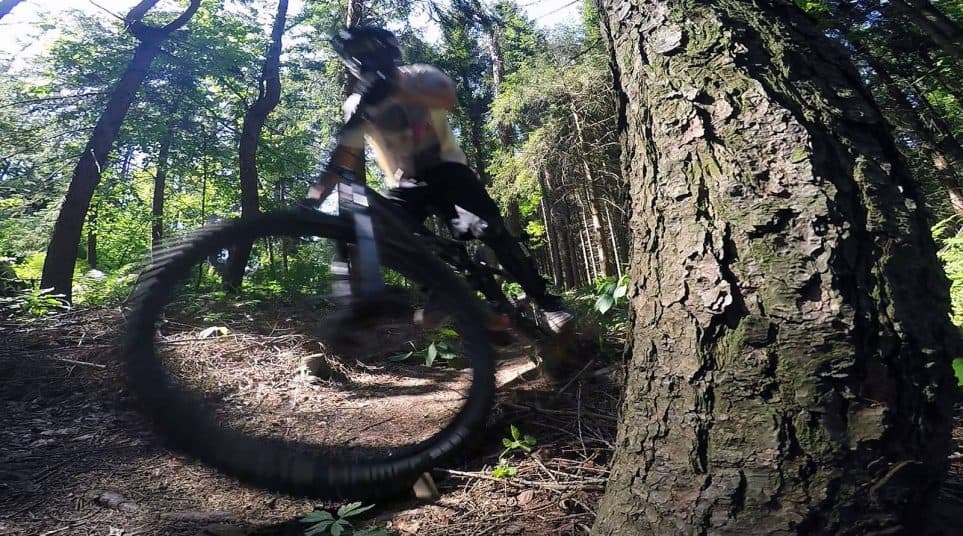Enduro Mountain biking is a relatively new format which appears to have taken some inspiration from both car rally and motorbike enduro racing. Mountain bike enduro is essentially the competitive side of the mountain biking format often referred to today as “All-Mountain”. It is a stage-race format where the winner is the rider who accumulates the lowest combined time from the various timed sections.
Mountain bike enduro competitions typically take place over the course of 1 or 2 days, however, week-long enduro competitions do also exist. A typical one-day enduro race consists of 3 to 5 timed “special” stages which take place on technically demanding, generally descending terrain. These special stages are linked by predominantly ascending “liaison” stages. Although a rider’s specific performance on the physically demanding liaison stages does not affect his or her result, the liaisons are often associated with a time-cut off. Enduro is a form of mountain bike racing in which there is a greater proportion of downhill sections, which are timed, to uphill and cross country sections. This aims to test rider’s technical bike handling skills as well as providing endurance and climbing.
Riders race multiple Enduro stages; the winner is the competitor with the lowest aggregate time.
Enduro differs from XC Cross-country cycling racing, which historically has more emphasis on cardiovascular fitness and less emphasis on technical ability, or to pure downhill cycling racing formats, which may contain little to no climbing or cross country skills. Enduro’s ‘All Mountain’ discipline therefore favours riders with a breadth of skill, on multi discipline cycles; lightweight XC bikes may lack sufficient suspension travel for fast downhill control, whilst full DH bikes may not allow a rider to climb the uphill sections.
As already said, enduro can be considered as the competitive side of all mountain mtb which is what most of us like to do – go uphill to earn our descent and where the real fun begins.
A typical all mountain bike weighs around 12-15 kilos (25-33 lbs), and has 140-170 millimeters (5.5-6.7 inches) of suspension travel front and rear.
